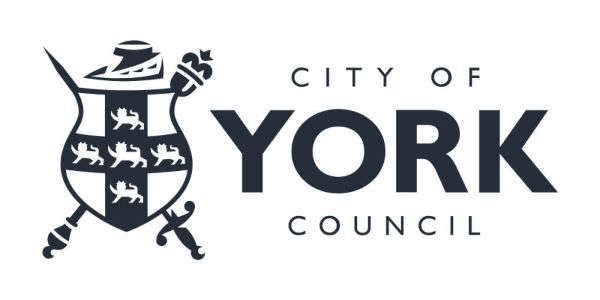
York’s long term Local Transport Strategy will take another step forward next week (24 September) as a draft Implementation Plan is discussed at City of York Council’s Economy, Place, Access and Transport Scrutiny Committee.
The Local Transport Strategy, which was adopted in July 2024, has been shaped by residents, businesses and commuters following extensive engagement. The feedback made clear that people are tired of congestion in the city, and that it is affecting people’s health and the reliability of public transport, impacts career prospects and socially isolates a wide range of people.
The draft Implementation Plan sets out a comprehensive series of options for the first two years of the Local Transport Strategy. Some are already funded and being delivered; others will require further funding, with the new Implementation Plan articulating the case for this. Alongside the Implementation Plan, Members will also be asked to comment on the proposed routes and improvement zones within York’s emerging Local Cycling and Walking Infrastructure Plan (LCWIP).
Cllr Kate Ravilious, Executive Member for Transport, said; “York’s residents and businesses have told us loud and clear that our existing transport network is holding the city back and that things need to change.
“This is why getting an Implementation Plan in place is so important and we look forward to exploring the initial ideas at scrutiny, off the back of what people told us earlier in the year.
A key theme of the plan is to make better use of the transport infrastructure that we already have, including repairing and maintaining active travel routes and drawing up a parking strategy to ensure we make best use of our highways.
“Between now and 2040 we will transform the ways in which people move around our city, making walking, wheeling, cycling and getting the bus a truly realistic option for everyone – and, in doing so, free up road space for those who do need to drive. The Implementation Plan identifies the foundations required to reach this vision and has the genuine prospect of setting York on a new direction of travel, improving access to education, jobs and leisure, as well as improving the physical and mental wellbeing of our residents by reducing air and noise pollution.”
At the meeting councillors will review and discuss some of the ideas and options that could come in to benefit the city as a whole, creating a healthier, more sustainable and better-connected York where everyone has access to education, good health and employment. These options will be discussed at scrutiny before a final implementation plan is taken to Executive in the coming months. Ideas being looked at include:
- A pilot corridor and neighbourhoods project with protected cycle infrastructure, accessible pavements and Copenhagen style side-road crossings along main roads and streets near schools. This comes after people told us that they would walk and cycle more if there were safer better routes.
- Improving and creating links to and from all of York’s villages to where people work, with corresponding secure cycle parking in the centre of York and cycle hangars in residential areas. In the consultation some people told us they found it hard to get to jobs and career opportunities, and this is one of the ways this could be addressed.
- Increasing road safety by introducing more speed reductions. Two thirds of York’s main roads currently have 20mph speed limits and we will look to expand the use of 20mph, using stakeholder and resident engagement sessions to explore what form this might take. Streets near schools, in villages and where pedestrians and cyclists need to be safer – for example, in and around York city centre – will be a particular focus. This is because families and residents across central and suburban York raised concerns about road safety. To tackle city centre congestion and the impact this has on bus reliability from York’s villages and suburbs, improvements including traffic filtering and widened pavements could be made for buses, pedestrians and cyclists between Rougier Street and Tower Street via Ouse Bridge. This comes after bus reliability was the most frequently raised concern in ‘Our Big Transport Conversation’. Other initiatives to improve bus reliability and attractiveness that will be explored following public feedback are:
- Improving the Park and Ride terminals, upgrading them to ‘multi-modal hubs’ with overnight parking and better cycle parking facilities.
- Providing additional bus priority routes and better enforcing our existing bus priorities, including around Pavement and Piccadilly
- Supporting the continuation of the current £2 maximum bus fare policy which is currently funded by the Department for Transport
Residents also made it clear that city centre congestion is something that needs to be tackled. To address this, the implementation plan supports York’s ongoing major projects to:
- Improve the Outer Ring Road, moving journeys outside the city centre and improving active travel facilities.
- Complete the Station Gateway project, which will make it easier for people to get to York Station by public transport, walking, wheeling and cycling.
- Secure funding to provide the new station at Haxby
Some of the proposed initiatives would be new to York; those which support our new Transport Strategy can be immediately adopted, others need to be piloted. Where this is the case the Council is proposing to pilot schemes then monitor their impact to assess whether they should continue – and be expanded to other areas – or be withdrawn. Many of the schemes to be discussed at Scrutiny will require new funding or reviews of existing Council budgets to support our new priorities.
Following the Scrutiny meeting, at which a cross-party discussion will be held, the Implementation Plan will be put to Executive on 14th November. Schemes will then be worked into our prioritised works programme and aligned to budgets and resources. Any changes to the existing programme will be taken to Executive. Public engagement will be held on individual projects, and we would encourage all residents to take part in the conversation.



 ‘Darkest Hour’ star Gary Oldman is coming to York!
‘Darkest Hour’ star Gary Oldman is coming to York!